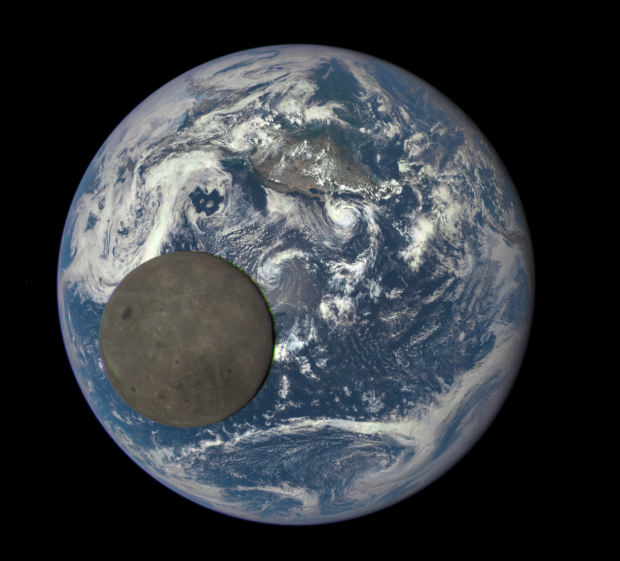Life on the moon? It could have happened billions of years ago, astrobiologists say

The moon is one of the last places in the solar system you’d expect to find life today, but astrobiologists say life could have found a foothold there billions of years ago.
The life-on-the-moon question could provide a focus for future science missions to the moon in the years ahead, and mesh with similar searches on more promising worlds such as Mars, the Jovian moon Europa and the Saturnian moon Enceladus.
In a study published online today by the journal Astrobiology, Washington State University’s Dirk Schulze-Makuch and the University of London’s Ian Crawford pinpoint two spans of time when conditions on the moon might have supported simple lifeforms.

One time frame would have started about 4 billion years ago, shortly after the moon formed from a disk of debris created by a collision between Earth and a primordial Mars-sized planet. The other time frame would have come about 3.5 billion years ago, during a peak in volcanic activity on the young moon.
Planetary scientists speculate that during both those periods, the moon’s interior was outgassing vast quantities of superheated volatiles, including water vapor.
Some of those gases could have condensed to form pools of liquid water on the surface and an atmosphere, the two astrobiologists say.
“If liquid water and a significant atmosphere were present on the early moon for long periods of time, we think the lunar surface would have been at least transiently habitable,” Schulze-Makuch said in a news release.
He said the young moon’s magnetic field could have shielded the atmosphere and any organisms on the surface from blasts of deadly solar radiation. “There could have actually been microbes thriving in water pools on the moon until the surface became dry and dead,” Schulze-Makuch said.
It’s highly debatable whether the right conditions could have existed on the moon long enough for life to arise independently. The more likely scenario would involve microbes hitchhiking their way to the moon on meteorites that were blasted away from the early Earth — or perhaps even from Mars.
Even today, the moon contains deposits of water ice that seem big enough to support future human settlements. Much of that water is thought to have been transported to the lunar surface by asteroids and comets billions of years ago. But any lunar life would be long gone.
Schulze-Makuch and Crawford acknowledge it’d be tough to find a smoking gun to prove their claims. “Whether life ever arose on the moon, or was transported to it from elsewhere, is of course highly speculative and can only be addressed by an aggressive future program of lunar exploration,” they say in the Astrobiology paper.
One potential line of inquiry would involve analyzing samples from lunar deposits that were laid down during the key period of heightened volcanic activity, to look for biomarkers or other chemical signatures of habitable conditions.
Closer to home, researchers could conduct experiments in chambers that simulate the early lunar environment, to see whether microbial life could remain viable. Similar studies are already being done to simulate Martian conditions, in earthly labs and on the International Space Station.
“Such facilities are available at many research institutions around the world and could easily be modified to simulate early lunar environmental conditions,” Schulze-Makuch and Crawford say.
More from GeekWire:
Moon Express unveils its roadmap for giant leaps to the lunar surface … and back again
Voyager at 40: ‘The Search for Life in Space’ puts big question on the big screen
Google Lunar XPRIZE teams get more time and more cash incentives for moon shots
Scientists call for a treaty to protect Apollo moon sites and other famous space places

 Yahoo News
Yahoo News 